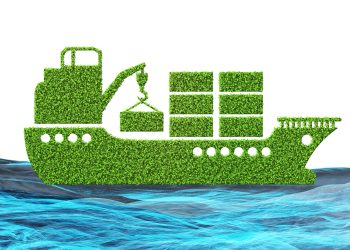Maximum sulphur content of 0.10% from 2015
 As reported last, on 16 February, the Environment Committee (ENVI) of the European Parliament adopted its first reading position on the Commission proposal on the revision of the EU Sulphur Directive. In this first reading position, ENVI members suggest stricter sulphur limits for the EU than those stipulated in MARPOL Annex VI.
As reported last, on 16 February, the Environment Committee (ENVI) of the European Parliament adopted its first reading position on the Commission proposal on the revision of the EU Sulphur Directive. In this first reading position, ENVI members suggest stricter sulphur limits for the EU than those stipulated in MARPOL Annex VI.
To recall, on 15 July 2011 the European Commission came forward with its proposal to revise the EU Sulphur Directive (1999/32/EC), which lays down the maximum permitted sulphur content of heavy fuel oil, gas oil and marine gas oil used in the EU. According to the Commission, the main purpose of the revision of Directive 1999/32/EC is to align it with the 2008 amendments to MARPOL Annex VI and the new sulphur standards.
According to the ENVI Committee’s position, ships operating in Sulphur Emission Control Areas (SECAs), in EU territorial seas, and pollution control zones, would be required to burn fuels with a maximum sulphur content of 0.10% from 2015. In Exclusive Economic Zones (EEZ) ships would be required to burn fuels with a maximum sulphur content of 0.50% from 2015. As of 2020, ships sailing in EU waters (i.e. territorial seas, exclusive economic zones and pollution control zones) would have to burn fuels with a maximum sulphur content of 0.10%. These limits, which go well beyond those agreed at IMO and those proposed by the Commission, would require ships trading to and from European ports to perform multiple fuel switching.
The term “pollution control zones” is understood to mean zones designated by Member States under the United Nations Convention on the Law of the Sea (UNCLOS) that need special environmental protection. However, not all EU Member States have designated such zones. According to the Commission, the reason this term is included in the Directive, is to counter the fact that some Member States, especially in the Mediterranean, have not claimed their EEZ. The inclusion of “pollution control zones” to designate the scope of application of certain sulphur limits therefore ensures these limits apply to the widest area possible.
On a more positive note, INTERTANKO welcomes the inclusion of a safeguard clause in case of non-availability of compliant fuel (mirroring Regulation 18 of MARPOL Annex VI). The European Commission had not taken up this provision in its original proposal. INTERTANKO has been in regular contact with key members of the ENVI Committee in order to promote the addition of a corresponding clause in the first reading position. INTERTANKO furthermore welcomes the ENVI Committee’s call for more regular fuel sampling at the time of delivery to the vessel.
Other relevant amendments put forward by the ENVI Committee concern the promotion of shoreside electricity and the banning of fuel with a sulphur content exceeding 3.5%, unless it is used in conjunction with emission abatement methods. Furthermore, the Committee insists that waste from scrubbers must be disposed of properly in adequate reception facilities. Finally, MEPs propose that the designation of new SECAs should be done at IMO based on sound scientific data, however this contradicts the above-mentioned amendments that change the IMO limits and create a de-facto new European SECA.
As a next step the Parliament will commence negotiations with the Council (EU Member States) in an attempt to close this file in only one reading. However, in view of the controversial nature of this file and a political divide between the northern and southern European Member States, and members of Parliament, this would appear to be very ambitious. It is therefore rather likely that the file will enter into a second reading and shall remain on the EU’s agenda well into the second half of 2012.
INTERTANKO will continue to closely monitor the developments on this file and will continue to engage with EU decision makers if and when necessary.
A consolidated version of the Parliament’s position is not yet available. However a copy of the Commission’s proposal can be downloaded by clicking here.
Source : INTERTANKO



























































